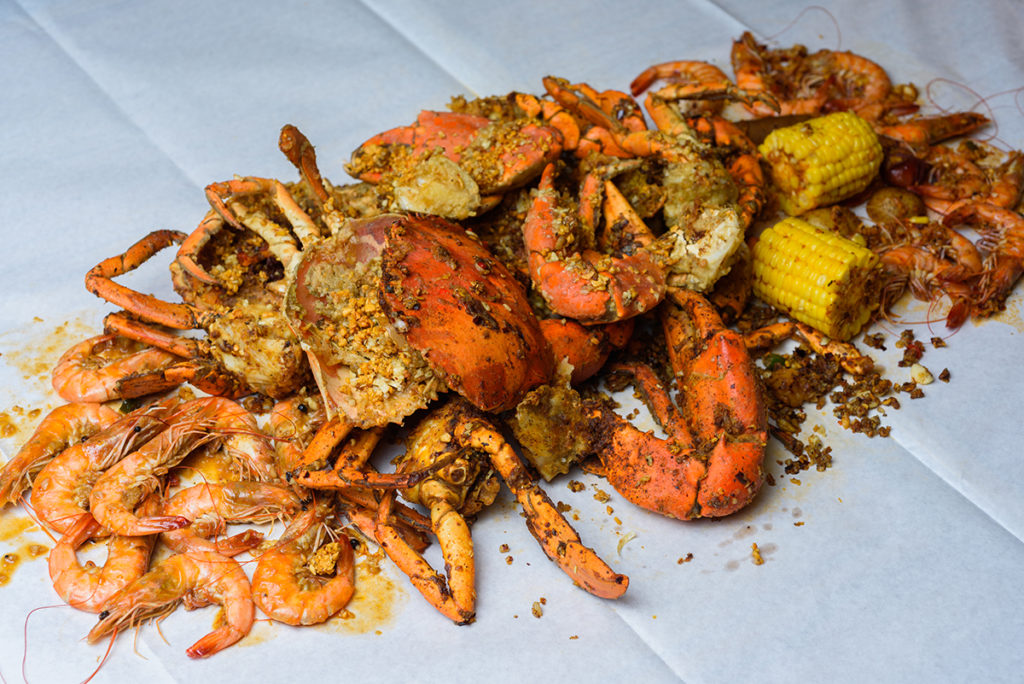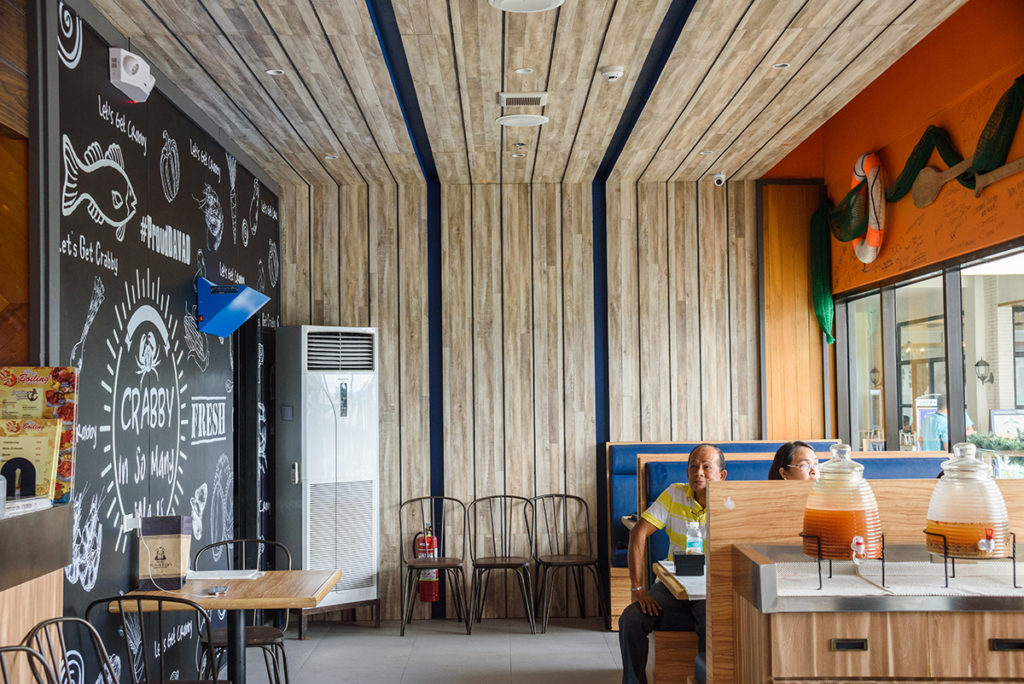Having run Blue Posts Boiling Crabs & Shrimps for four years now, and the now-defunct Blue Post bar in Davao for 25 years, Anthony Ang is not exactly a newcomer to the F&B industry. He is used to running restaurants and operating a fast system. But he admits to not being totally prepared for the change in tempo to a more upbeat rhythm when he expanded his brand and opened in Metro Manila last year. “You need to really love challenges to open in Manila kasi hindi ka mauubusan,” he relates, half-jokingly.
Successfully launching a metro-based restaurant in cities like Davao and Cebu is a familiar tale. But stories of the reverse are few and far between. Growing your footprint in Metro Manila has always been a double-edged sword: You have a population of 12.8 million with growing purchasing power, but then there’s the cutthroat competition that is definitely not for the weak-willed restaurateur.
It’s no wonder then that it took Zubuchon six years (it launched in Cebu in June 2011) to finally open a branch in the country’s capital. It was a decision that owner Joel Binamira shares he “did not take lightly.”
“Manila is a much larger market than Cebu, with eight to 10 times the population, and definitely more competition in terms of restaurant choices,” explains Binamira, such that even when as early as 2012 he had been receiving several requests a month to either open a branch or allow a franchise to operate Zubuchon in the mega city, it took “another two years before we finally found the right place to open our first branch, and attach roasting pits,” he says.


Tales from the front
In today’s Manila dining scene, restaurateurs keen on penetrating the market are finding that a copy-paste strategy just isn’t going to cut it.
“We slightly expanded our menu for Manila—one thing we noticed is that diners here tend to eat more vegetable dishes and far more dessert,” says Binamira, noting that a lot of the challenges shared between Manila and Cebu relate to building a solid service team and maintaining standards of food quality and service. “Logistics here is a far greater challenge, however, as getting lechon to our branches three times a day in Manila can be hair-raising,” he says.
As the specialty food on offer at Ang’s and Binamira’s establishments is precisely what attracted their growing band of Manila customers in the first place, their attention to maintaining the highest standards is necessarily exacting.
“We slightly expanded our menu for Manila—one thing we noticed is that diners here tend to eat more vegetable dishes and far more dessert,” says Joel Binamira.
“Our crabs are already pricey for Davao standards, and it’s more or less similar to Davao, but it’s really because our crabs are of export quality. We don’t just get them from the local market but from accredited suppliers,” reveals Ang, adding he doesn’t serve crabs that fall below 500 grams. “We want the quality to be worth the price,” he states.
Zubuchon isn’t any different with its focus on getting local dishes done right. “There are no shortcuts, no MSG, no other artificial enhancers,” emphasizes Binamira. “We’ve meticulously researched and tested our recipes, and carefully considered our portion sizes, which are often significantly larger than our competitors’, providing good value for clients.”
Staying small
While validated demand may be a compelling reason to prompt restaurateurs like Ang and Binamira to sink their teeth into Metro Manila’s dining scene (both reveal that many domestic and foreign tourists visit their Cebu and Davao branches), that is not always the ultimate clincher.
Several years of operating in Cebu as well as having a pasalubong kiosk in the Mactan Airport had ensured advanced “demand” for Zubuchon in Manila, but Binamira’s philosophy on expansion has always been more deliberate. “We’ve always moved at a slower pace than others, and we like it that way. All our branches are company-owned—there are no franchises despite 50 serious offers from various investors—because the goal has always been not to grow quickly but to do it while maintaining the core values of our brand,” he says.
It’s a similar strategy Ang implements, though his motivations are more romantic: A desire to show what Davaoeños are capable of. There’s also something to be said about the people behind both restaurants’ operations: A majority have been with the businesses from the beginning.
With 75 percent of Binamira’s current staff comprising permanent employees, Zubuchon runs like a well-oiled machine, consistently ranking among Cebu’s top three restaurants specializing in Filipino food on TripAdvisor. “We’ve maintained the high rankings for nearly six straight years, a difficult feat in a very competitive restaurant environment, and it’s the result of a very attentive customer recovery and retention program observed by our restaurant managers,” says Binamira. “All restaurant managers are given authority to immediately correct any service shortfalls, ensuring a higher degree of customer satisfaction overall.”
“We’ve always moved at a slower pace than others, and we like it that way. All our branches are company-owned—there are no franchises despite 50 serious offers from various investors—because the goal has always been not to grow quickly but to do it while maintaining the core values of our brand.”
Being a family-oriented business does not only pertain to Blue Posts Boiling Crabs & Shrimps’ overall branding. “We’re a family-oriented business and this follows internally,” relates Ang, revealing that most of his staff have been with Blue Post for 20 to 25 years. “As early as the bar business,” he points out.
It’s one of the reasons why he is “very choosy” when it comes to opening new branches in Manila. “I want to make sure everybody is ready—the team you see behind the counter, most are from Davao. This isn’t just my dream, but the team’s as well.”

